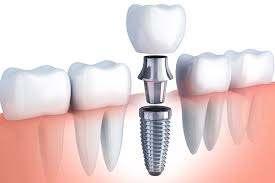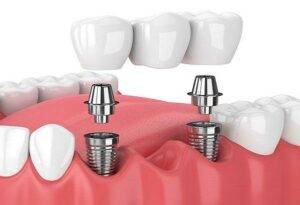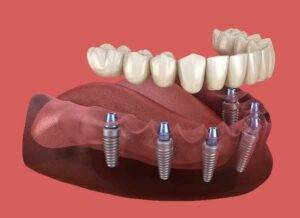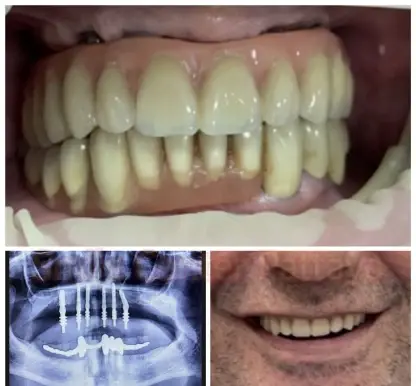Menu



Once your tooth are damaged and have no enough remaining structure to be restored by dental crown or cap, dental implant is considered the best solution for this situation. Dental implant will replace both root of this tooth in conjunction with a porcelain crown on top. This treatment will benefits both looks and functions just like a natural tooth. Dental implant allows you to speak, smile and eat with confidence. Unlike dental bridge or denture, these are replacements that can be inserted without affecting any of your remaining teeth. A dental implant is made of titanium and shaped like a screw. The dental implant is placed into the jawbone and serves as a secure root for the new tooth. The root anchors the tooth to your jawbone, acting as a foundation for the crown. Without the root, the bone around the missing tooth will gradually recede causing the remaining teeth to shift. Once the dental implant is in place, several different types of dental restorations, such as crowns, bridges or dentures, can be attached. Implants can be considered to replace a single tooth or multiple teeth. Often when the teeth on either side of the space are in good health, an implant may be the most conservative means of replacing the missing teeth because patient won’t loss healthy adjacent teeth to grinding out as a bridge.

For those who have lost all their teeth in an upper or lower jaw, the long-term problems are even greater. The bone shrinks after tooth loss. This causes the nerves to become exposed and the dentures will lack support. Loose fitting dentures can cause further problems and lead to sore gum tissue and additional pain. However, modern dentistry can help people to continue living in discomfort. All-on-4 Implant complete reconstruction of a patient’s mouth, by fitting a dental prosthesis attached onto four points on implants. These four implants acted as “pillars” to support 10 to 14 porcelain teeth or hybridge over denture. The protocol utilizes a simple guide for predictable and optimal positioning of four implants (six implants, if necessary, in the maxilla).
Dental Center by specialist. Dental cleaning, Teeth whitening, Implant, Cosmetic, full mouth restoration.
Smile Dental Center
111/76-77 South Pattaya road Nongprue, Banglamung Chonburi 20150 Tel: 083 066 9486
Everyday: 10:00 – 20:00